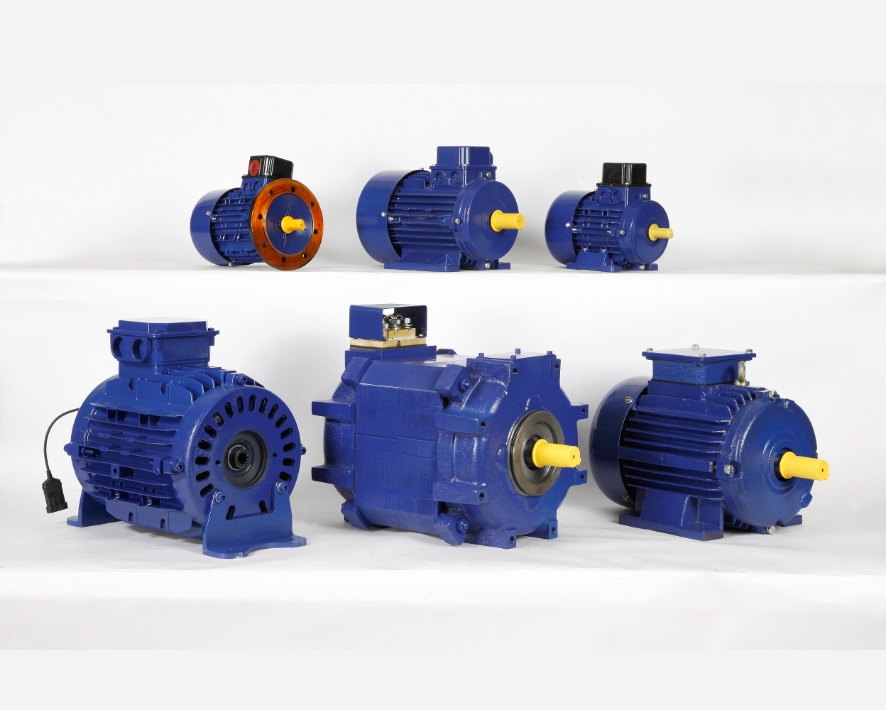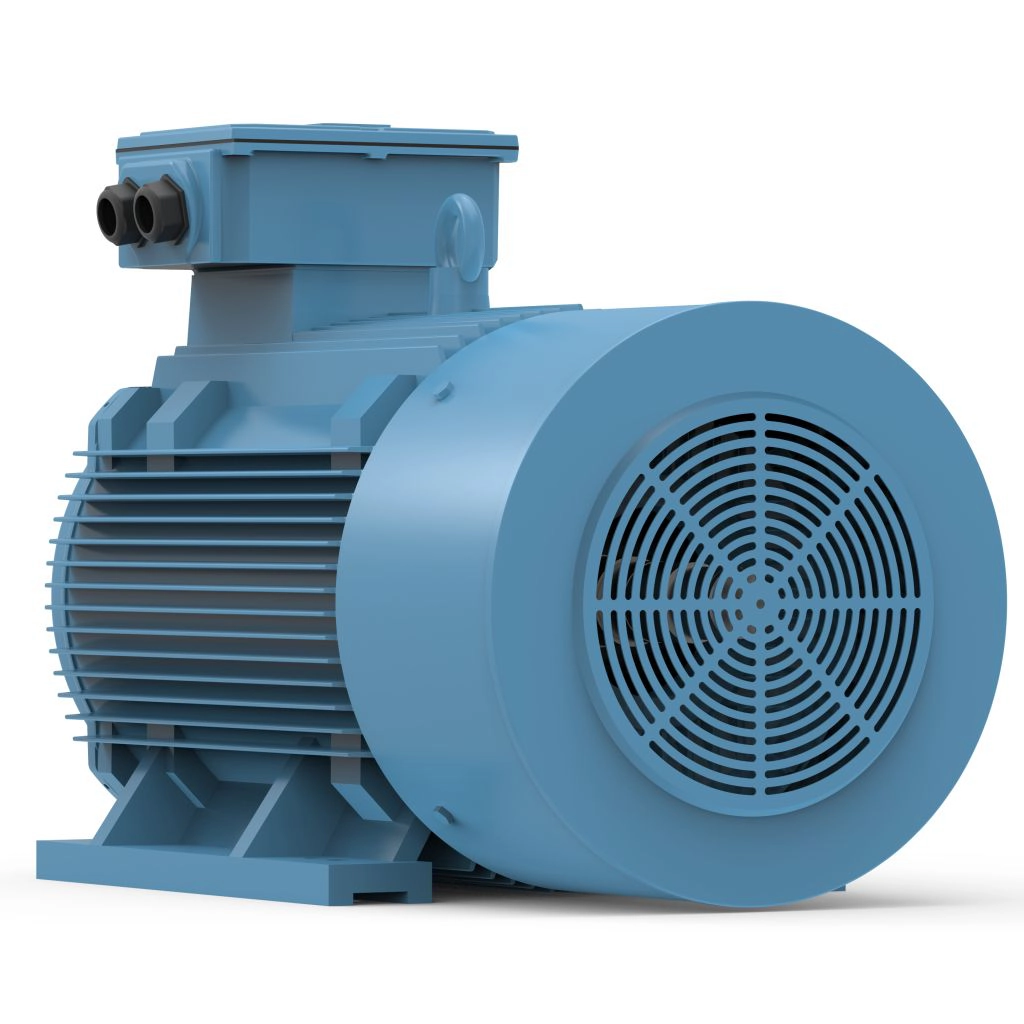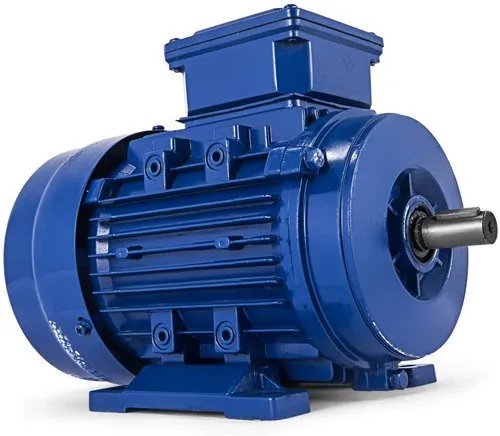Product Description
Three Phase Asynchronous Electric Motors
(Xvm75-6)
Introduction
XVM series vibration motor is designed as a high-end vibrating motor.It is available in several types with different specifications, while the most powerful 1 comes with an exciting force of 300 KN, and is driven by 30kw power.The rotor and stator are made of excellent silicon steel sheet.The heat dissipation is limited.High purity copper wire is used for better performance of the motor.The design of electromagnetic spec is suitable for vertical motor’s operating characteristics. Be swift starting and stable operating
Features
| Small 3 phase AC electric vibrating motor-XVM | |
| Model | XVM electric vibrating motor |
| Excitation Force | 0.7KN-200KN |
| Poles | 2 pole/ 4 pole/ 6 pole/ 8 pole |
| Rotation speed | 3000RPM/1500rpm/1000rpm/750rpm |
| Power | 0.15KW-20KW |
| Workable temperature | -20~ -40°C |
| Working Height | Below 1000m |
| Voltage | 220/240/380/415/450V are all available |
| Frequency | 50HZ or 60HZ |
| Protective grade | IP55 or IP65 |
| Phase | 3 |
| Way of connection | Y |
| Insulating grade | B or F |
| Way of working | Continuous |
| Type | AC |
Application
Vibrating polisher, vibrating crusher, rotary vibration cleaning machine, vibrating dryer, vibration mixer, vibrating screen, vibrating table etc.
Specifications Sheets
| Model | Rated speed [rpm] |
Vibrating Force [KN] |
Power [kw] |
Current (A) |
Efficiency | Weight [kg] |
Bolt |
| XVM0.7-2 | 3000 | 0.7 | 0.15 | 0.38 | 70 | 14 | M12 |
| XVM1.5-2 | 1.5 | 0.15 | 0.38 | 70 | 15 | M12 | |
| XVM2.5-2 | 2.5 | 0.25 | 0.58 | 76 | 16 | M12 | |
| XVM 5-2 | 5 | 0.40 | 1.01 | 72 | 23 | M16 | |
| XVM 8-2 | 8 | 0.75 | 1.76 | 74 | 42 | M20 | |
| XVM 16-2 | 16 | 1.10 | 2.80 | 70 | 58 | M20 | |
| XVM 20-2 | 25 | 1.80 | 4.30 | 71 | 60 | M20 | |
| XVM 30-2 | 32 | 2.20 | 5.10 | 73 | 95 | M20 | |
| XVM 45-2 | 50 | 3.50 | 8.18 | 73 | 200 | M24 | |
| XVM 1.2-4 | 1500 | 1.2 | 0.07 | 0.30 | 60 | 14 | M12 |
| XVM 2.5-4 | 2 | 0.10 | 0.32 | 66 | 18 | M12 | |
| XVM 5-4 | 5 | 0.20 | 0.65 | 70 | 27 | M16 | |
| XVM 8-4 | 8 | 0.40 | 1.14 | 73 | 44 | M20 | |
| XZM-10-4 | 10 | 0.5 | 1.14 | 74 | 46 | M20 | |
| XVM 16-4 | 16 | 0.75 | 2.08 | 74 | 65 | M20 | |
| XVM 20-4 | 20 | 1.1 | 2.6 | 74 | 67 | M20 | |
| XVM 25-4 | 25 | 1.5 | 3.0 | 74 | 111 | M20 | |
| XVM 32-4 | 32 | 2.00 | 4.73 | 77 | 116 | M20 | |
| XVM-40-4 | 40 | 2.2 | 5.0 | 73 | 135 | M20 | |
| XVM 50-4 | 5 | 2.50 | 6.25 | 73 | 240 | M24 | |
| XVM 75-4 | 75 | 4.00 | 10.14 | 74 | 270 | M30 | |
| XVM100-4 | 100 | 6.50 | 16.88 | 71 | 390 | M30 | |
| XVM120-4 | 120 | 8.00 | 19.40 | 76 | 510 | M36 | |
| XVM140-4 | 140 | 10.00 | 24.16 | 75 | 580 | M36 | |
| XVM160-4 | 160 | 10.00 | 24.16 | 75 | 620 | M36 | |
| XVM2.5-6 | 1000 | 2.5 | 0.20 | 0.70 | 71 | 28 | M16 |
| XVM 5-6 | 5 | 0.40 | 1.23 | 74 | 37 | M16 | |
| XVM 8-6 | 8 | 0.55 | 1.5 | 74 | 51 | M20 | |
| XVM 10-6 | 10 | 0.75 | 2.18 | 78 | 69 | M20 | |
| XVM 16-6 | 16 | 1.10 | 3.03 | 78 | 83 | M20 | |
| XVM 20-6 | 20 | 1.50 | 4.10 | 81 | 117 | M20 | |
| XVM 30-6 | 30 | 2.20 | 6.10 | 80 | 165 | M20 | |
| XVM 40-6 | 40 | 3.00 | 7.40 | 84 | 189 | M20 | |
| XVM 50-6 | 50 | 3.70 | 9.60 | 83 | 230 | M24 | |
| XVM 75-6 | 7.5 | 5.50 | 12.60 | 81 | 290 | M30 | |
| XVM100-6 | 100 | 7.50 | 17.93 | 81 | 450 | M30 | |
| XVM120-6 | 120 | 9.50 | 21.70 | 83 | 550 | M36 | |
| XVM140-6 | 140 | 9.50 | 21.70 | 83 | 615 | M36 | |
| XVM160-6 | 160 | 12.00 | 27.37 | 81 | 675 | M36 | |
| XVM180-6 | 180 | 14.00 | 31.87 | 81 | 860 | M42 | |
| XVM 5-8 | 750 | 5 | 0.40 | 1.62 | 68 | 74 | M20 |
| XVM 10-8 | 10 | 0.75 | 2.90 | 72 | 117 | M20 | |
| XVM 16-8 | 16 | 1.50 | 4.02 | 80 | 172 | M20 | |
| XVM 20-8 | 20 | 2.20 | 5.93 | 80 | 190 | M20 | |
| XVM 30-8 | 30 | 3.00 | 8.10 | 82 | 230 | M24 | |
| XVM 50-8 | 50 | 4.00 | 10.60 | 82 | 290 | M30 | |
| XVM 75-8 | 75 | 6.50 | 17.10 | 81 | 450 | M30 | |
| XVM100-8 | 100 | 8.50 | 21.80 | 81 | 690 | M36 |
FAQ
Please kindly provide the following information for a suitable vibrating motor machine:
1.Your usage?
2.The power (KW)?
3.The rated speed(rpm)?
4.The voltage?(220/240/380/415/450V are all available)
5.Other special requirements?
Pls feel free to contact now………………………………..
/* January 22, 2571 19:08:37 */!function(){function s(e,r){var a,o={};try{e&&e.split(“,”).forEach(function(e,t){e&&(a=e.match(/(.*?):(.*)$/))&&1
| Application: | Industrial |
|---|---|
| Speed: | Variable Speed |
| Number of Stator: | Three-Phase |
| Function: | Driving |
| Casing Protection: | Protection Type |
| Number of Poles: | 6 |
| Customization: |
Available
|
|
|---|
How do 3-phase motors differ from single-phase motors?
3-phase motors and single-phase motors differ in several aspects, including their power supply, construction, performance characteristics, and applications. Here’s a detailed explanation of the differences between 3-phase motors and single-phase motors:
- Power Supply: The primary difference between 3-phase motors and single-phase motors is their power supply. 3-phase motors require a three-phase power supply, which consists of three alternating current (AC) voltage waveforms that are 120 degrees out of phase with each other. In contrast, single-phase motors operate on a single-phase power supply, which consists of a single AC voltage waveform.
- Construction: The construction of 3-phase motors and single-phase motors also differs. 3-phase motors have three sets of windings evenly spaced around the motor’s stator, whereas single-phase motors typically have only one set of windings. The multiple windings in 3-phase motors enable the creation of a rotating magnetic field, which is essential for their operation.
- Starting Mechanism: 3-phase motors and single-phase motors have different starting mechanisms. 3-phase motors can start on their own with a simple direct-on-line (DOL) starting method, where the motor is connected directly to the power supply. In contrast, single-phase motors require additional starting mechanisms, such as capacitors or centrifugal switches, to overcome the need for a rotating magnetic field during startup.
- Starting Torque: 3-phase motors tend to have higher starting torque compared to single-phase motors. The balanced three-phase power supply and the design of 3-phase motors allow them to produce a strong rotating magnetic field, enabling efficient starting and acceleration. Single-phase motors, on the other hand, often experience lower starting torque due to the absence of a rotating magnetic field during startup.
- Efficiency: In terms of efficiency, 3-phase motors are generally more efficient than single-phase motors. The balanced three-phase power supply and the design of 3-phase motors result in smoother operation and reduced losses compared to single-phase motors. This higher efficiency translates to better performance and energy savings in applications where 3-phase motors are utilized.
- Power Rating: 3-phase motors are commonly available in higher power ratings compared to single-phase motors. The ability of 3-phase motors to deliver higher power output makes them suitable for applications that require greater torque and horsepower, such as heavy-duty industrial machinery and equipment. Single-phase motors are typically used in lower power applications, such as household appliances and small tools.
- Applications: The applications of 3-phase motors and single-phase motors also differ. 3-phase motors are widely used in industrial and commercial applications, including pumps, compressors, HVAC systems, electric vehicles, and robotics. Single-phase motors are commonly found in residential and small-scale applications, such as household appliances (e.g., refrigerators, air conditioners, and washing machines) and small tools (e.g., fans and power tools).
These are the key differences between 3-phase motors and single-phase motors. While 3-phase motors offer advantages in terms of efficiency, starting torque, and power rating, single-phase motors are suitable for smaller-scale applications and residential use. The selection of the motor type depends on the specific requirements of the application and the availability of the appropriate power supply.
Can 3-phase motors be adapted for use in both small and large-scale applications?
Yes, 3-phase motors are highly adaptable and can be used in both small and large-scale applications. Here’s a detailed explanation of their adaptability:
- Small-Scale Applications: 3-phase motors are available in a wide range of sizes and power ratings, making them suitable for small-scale applications. These motors can be found in various small industrial machines, appliances, and equipment. They are commonly used in small pumps, compressors, fans, conveyors, blowers, and other devices requiring reliable and efficient motor operation.
- Large-Scale Applications: 3-phase motors are also well-suited for large-scale applications that demand high power and torque. They can be found in heavy-duty industrial machinery and equipment used in manufacturing plants, mining operations, oil refineries, and other industrial sectors. Large-scale applications of 3-phase motors include motor-driven compressors, generators, crushers, mills, conveyor systems, and large HVAC (heating, ventilation, and air conditioning) units.
- Flexibility in Voltage and Frequency: 3-phase motors can operate with different voltage and frequency configurations, allowing for adaptation to various power systems worldwide. They can be designed and configured to accommodate specific voltage and frequency requirements, making them compatible with the electrical infrastructure of different regions and countries. This flexibility in voltage and frequency makes 3-phase motors suitable for both small and large-scale applications globally.
- Motor Control Options: 3-phase motors can be coupled with various control devices and technologies to adapt to different application requirements. For small-scale applications, simple motor starters or contactors can provide basic control functionality. In contrast, large-scale applications often utilize more advanced control systems, such as variable frequency drives (VFDs) or adjustable speed drives (ASDs), which offer precise speed and torque control. These control options allow 3-phase motors to meet the specific needs of both small and large-scale applications.
- Application-Specific Designs: Manufacturers offer a wide range of 3-phase motor designs and configurations to cater to different application requirements. Motors can be customized to meet specific performance criteria, environmental conditions, and industry standards. This adaptability allows 3-phase motors to be optimized for both small and large-scale applications, ensuring optimal efficiency, reliability, and performance.
Overall, the adaptability of 3-phase motors makes them suitable for a wide range of applications, from small-scale to large-scale. Their availability in various sizes, flexibility in voltage and frequency, compatibility with different control options, and ability to be customized for specific applications make them a versatile choice for different industrial needs. Whether it’s powering small machines or driving heavy-duty equipment, 3-phase motors can be adapted to meet the requirements of both small and large-scale applications.
How do 3-phase motors impact the overall productivity of manufacturing processes?
3-phase motors have a significant impact on the overall productivity of manufacturing processes. Here’s a detailed explanation of how they contribute to increased productivity:
- High Power and Efficiency:
- 3-phase motors are known for their high power output and efficiency. They can deliver substantial torque even at low speeds, making them suitable for a wide range of industrial applications.
- The high efficiency of 3-phase motors means that they can convert a larger portion of the electrical input power into mechanical output power. This results in less energy wastage and lower operating costs for manufacturing processes.
- Flexible Speed Control:
- 3-phase motors can be easily controlled and adjusted in terms of speed and torque output. This flexibility allows manufacturers to optimize motor performance based on the specific requirements of different manufacturing processes.
- By utilizing control devices such as variable frequency drives (VFDs) or adjustable speed drives (ASDs), the speed of 3-phase motors can be precisely regulated. This enables manufacturers to match the motor speed to the process demands, resulting in improved efficiency and productivity.
- Reliable and Durable:
- 3-phase motors are known for their reliability and durability. They are designed to withstand the harsh operating conditions often found in manufacturing environments.
- The robust construction of 3-phase motors allows them to operate continuously for extended periods without frequent maintenance or breakdowns. This minimizes downtime and ensures uninterrupted production in manufacturing processes.
- Versatility and Adaptability:
- 3-phase motors are highly versatile and can be used in a wide range of manufacturing processes. They can power various types of machinery and equipment, including pumps, compressors, conveyors, mixers, and machining tools.
- 3-phase motors can handle different load variations and speed requirements, allowing manufacturers to adapt to changing production needs. This versatility enables efficient operation across a range of manufacturing applications and industries.
- Integration with Automation:
- 3-phase motors can be seamlessly integrated into advanced control systems and automation technologies. This integration allows for centralized control, real-time monitoring, and coordination of motor performance within manufacturing processes.
- By integrating 3-phase motors with control devices such as variable frequency drives (VFDs) and programmable logic controllers (PLCs), manufacturers can achieve precise control, data logging, and remote monitoring capabilities. This enhances process control, optimization, and productivity.
Overall, 3-phase motors play a crucial role in enhancing the overall productivity of manufacturing processes. Their high power, efficiency, flexible speed control, reliability, and adaptability contribute to improved efficiency, reduced energy consumption, increased uptime, and optimized performance in a wide range of industrial applications.
editor by CX 2024-05-15




